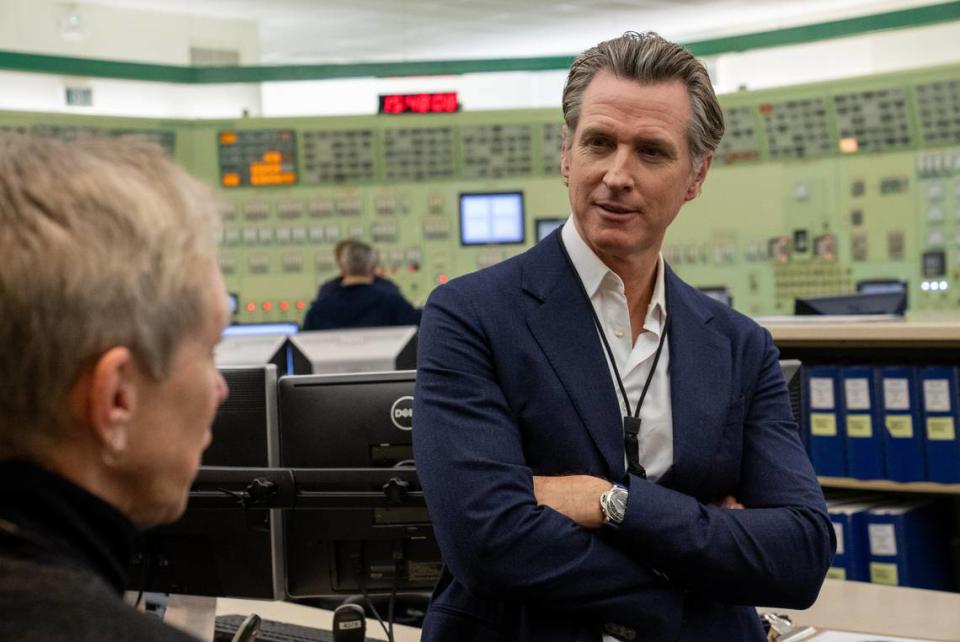PG&E is ‘hopeful’ Diablo Canyon can operate past 2030. What would that mean for ratepayers? | Opinion
The operating life of California’s last nuclear power plant already has — in all probability — been extended five years, allowing it to stay open until 2030.
Now there’s growing interest in keeping Diablo Canyon Power Plant in Avila Beach open even longer, possibly for 20 more years — and PG&E is finally acknowledging that it’s planning for that possibility.
“There’s no guarantee that we could ... be allowed to operate beyond 2030, but we certainly are hopeful,” Erik Werner, director of Diablo Canyon outage management, said at a recent meeting of the Diablo Canyon Independent Safety Commission. “And in our decision-making model and our long-term, long-range planning, we are taking into consideration with strong intent to be able to proceed past 2030 and have maintenance plans in place. ... So, high level, I’ll say that already has started. It didn’t start this year. It started before that.”
This comes at a time when PG&E customers already are fed up with the multiple rate increases the utility has hit them with over the past several months. Average electric bills are roughly $50 per month higher than they were at this time last year, and more increases are expected.
PG&E ‘significantly underestimates’ the cost of running Diablo Canyon
The question is, will it be cost effective to keep an aging nuclear power plant running 20 more years, especially as other types of energy — wind, solar, and battery storage — come on line.
The utility is getting some financial help over the next five years in the form of a $1.1 billion federal grant. But that doesn’t leave ratepayers will be off the hook, and it isn’t just PG&E customers who will be affected.
SB 846 — the state legislation that extended the operating life of the plant — specifies that a “fully nonbypassable charge” is to be imposed “on all customers of electrical corporations, electric service providers, and community choice aggregators.” That means every Californian who is on the grid will pay to keep Diablo Canyon running.
That reduces the financial burden on PG&E ratepayers but it’s unclear whether it will be worth it.
Estimates of the cost of operating Diablo Canyon past 2025 differ dramatically. PG&E has approximated the cost of running the plant until 2030 at about $5 billion, according to TURN, a utility watchdog group.
TURN claims that “significantly understates the true costs of continued operation of DCPP,” according to testimony it submitted to the California Public Utilities Commission. It says the cost will likely be closer to $10 billion.
“PG&E’s estimate excludes a wide range of costs,” TURN’s staff attorney Matthew Freedman said. “They arbitrarily limited the scope of costs by just ignoring a whole lot of things.”
Those include administrative costs, such as legal and financial services; retention bonuses for employees; $300 million to be set aside to pay for replacement power in case the plant goes offline; and $100 million per year in guaranteed profits, he said.
TURN has no estimate beyond 2030, though the Environmental Working Group (EWG), which opposes continued operation of the plant, has estimated that keeping Diablo online through 2045 could add from $55 to $124 a year to the typical utility bill.
“Or it could be even higher because these costs, at the moment, are highly speculative and because the older Diablo Canyon gets, the higher the capital and operating costs will become to keep it online and providing electricity,” EWG wrote in a news release.
The PUC has yet to determine whether it’s cost-effective to keep Diablo open even until 2030, much less for a longer period.
One thing to keep in mind: In calculating cost-effectiveness, it’s important to consider the price of energy needed to replace Diablo Canyon’s nuclear power to determine whether it makes sense to keep the plant open.

‘Let’s go back to getting our tax base’
Meanwhile, supporters of Diablo Canyon are mobilizing. The San Luis Obispo County Board of Supervisors is expected to adopt a resolution endorsing a 20-year extension; the board recently voted 3-2 to put the item on the agenda. That’s a good indication that it will be approved.
Supervisor Dawn Ortiz-Legg, a former PG&E employee who has also worked in the solar power industry, introduced the idea. “I think it’s important for us as a board to continue to support the plant’s operation,” she said. “... Let’s go back to getting our tax base back.”
For decades, San Luis Obispo County has depended on tax revenue from PG&E, in addition to Diablo’s well-paying jobs that further boost the local economy.
Two other supervisors agreed to bring the resolution back for a vote, while the remaining two said it’s premature.
It also fails to consider the bigger picture.
While it would help SLO County’s economy, it may increase the burden on ratepayers, especially if major capital expenditures are needed to keep the plan operating safely.
And the power may not be needed beyond 2030. Skeptics may find it hard to believe, but California may succeed in adding enough new sources of power — including wind, solar and battery storage — to compensate for the loss of Diablo Canyon.
While a resolution doesn’t carry much weight — it’s simply a statement of support — it does send a signal to the public. Some could interpret it as a sign that a 20-year extension is a done deal.
It’s not. The five-year extension agreed to by the California Legislature was intended to be a stop-gap measure to see the state through a period of transition.
Rushing to give the plant a blessing to stay open for 20 more years — without knowing what that might entail — may be great for PG&E, but not so great for the beleaguered ratepayers of California.
The Board of Supervisors should keep that in mind before choosing sides.

